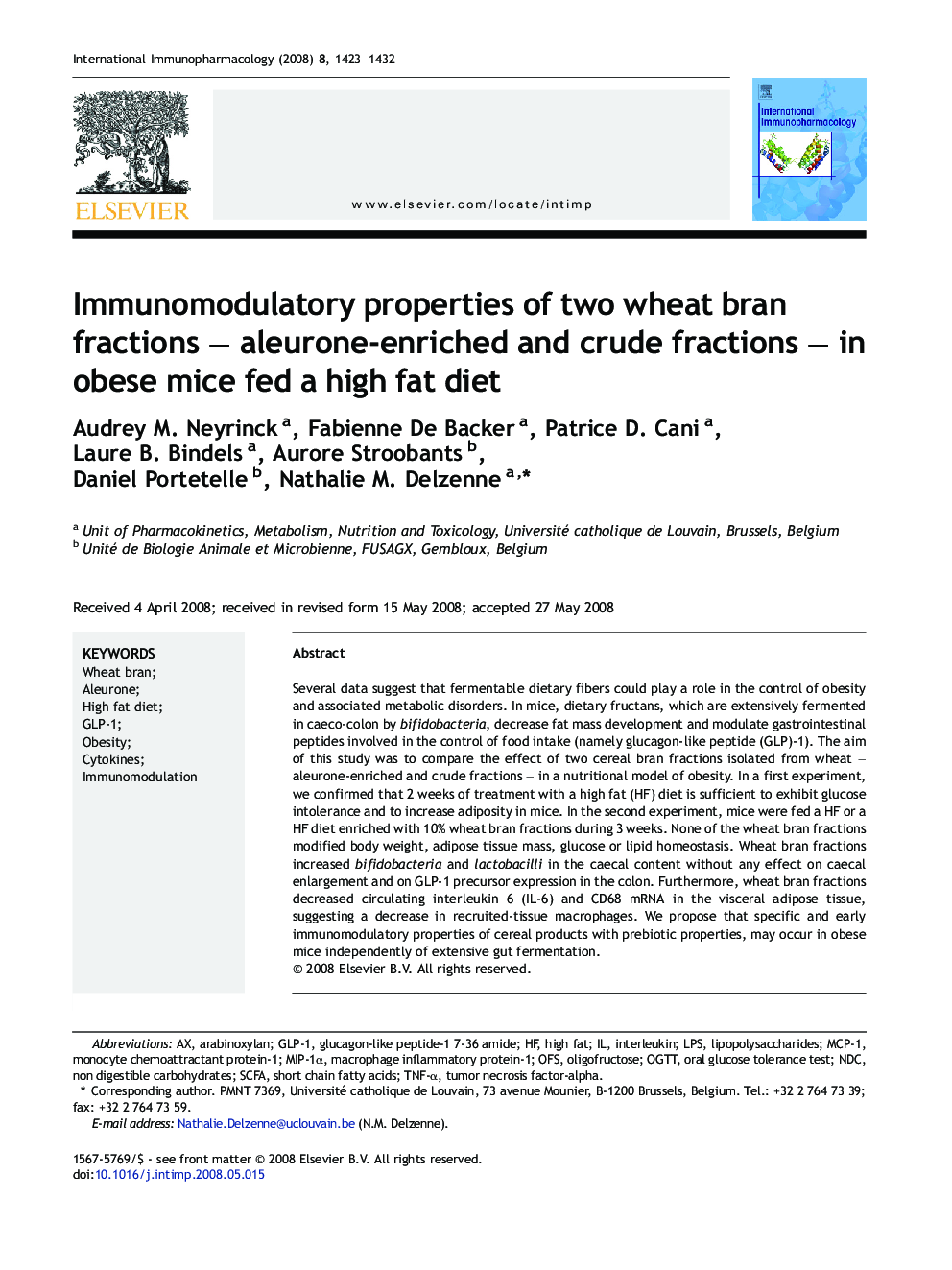| Article ID | Journal | Published Year | Pages | File Type |
|---|---|---|---|---|
| 2541589 | International Immunopharmacology | 2008 | 10 Pages |
Several data suggest that fermentable dietary fibers could play a role in the control of obesity and associated metabolic disorders. In mice, dietary fructans, which are extensively fermented in caeco-colon by bifidobacteria, decrease fat mass development and modulate gastrointestinal peptides involved in the control of food intake (namely glucagon-like peptide (GLP)-1). The aim of this study was to compare the effect of two cereal bran fractions isolated from wheat – aleurone-enriched and crude fractions – in a nutritional model of obesity. In a first experiment, we confirmed that 2 weeks of treatment with a high fat (HF) diet is sufficient to exhibit glucose intolerance and to increase adiposity in mice. In the second experiment, mice were fed a HF or a HF diet enriched with 10% wheat bran fractions during 3 weeks. None of the wheat bran fractions modified body weight, adipose tissue mass, glucose or lipid homeostasis. Wheat bran fractions increased bifidobacteria and lactobacilli in the caecal content without any effect on caecal enlargement and on GLP-1 precursor expression in the colon. Furthermore, wheat bran fractions decreased circulating interleukin 6 (IL-6) and CD68 mRNA in the visceral adipose tissue, suggesting a decrease in recruited-tissue macrophages. We propose that specific and early immunomodulatory properties of cereal products with prebiotic properties, may occur in obese mice independently of extensive gut fermentation.
